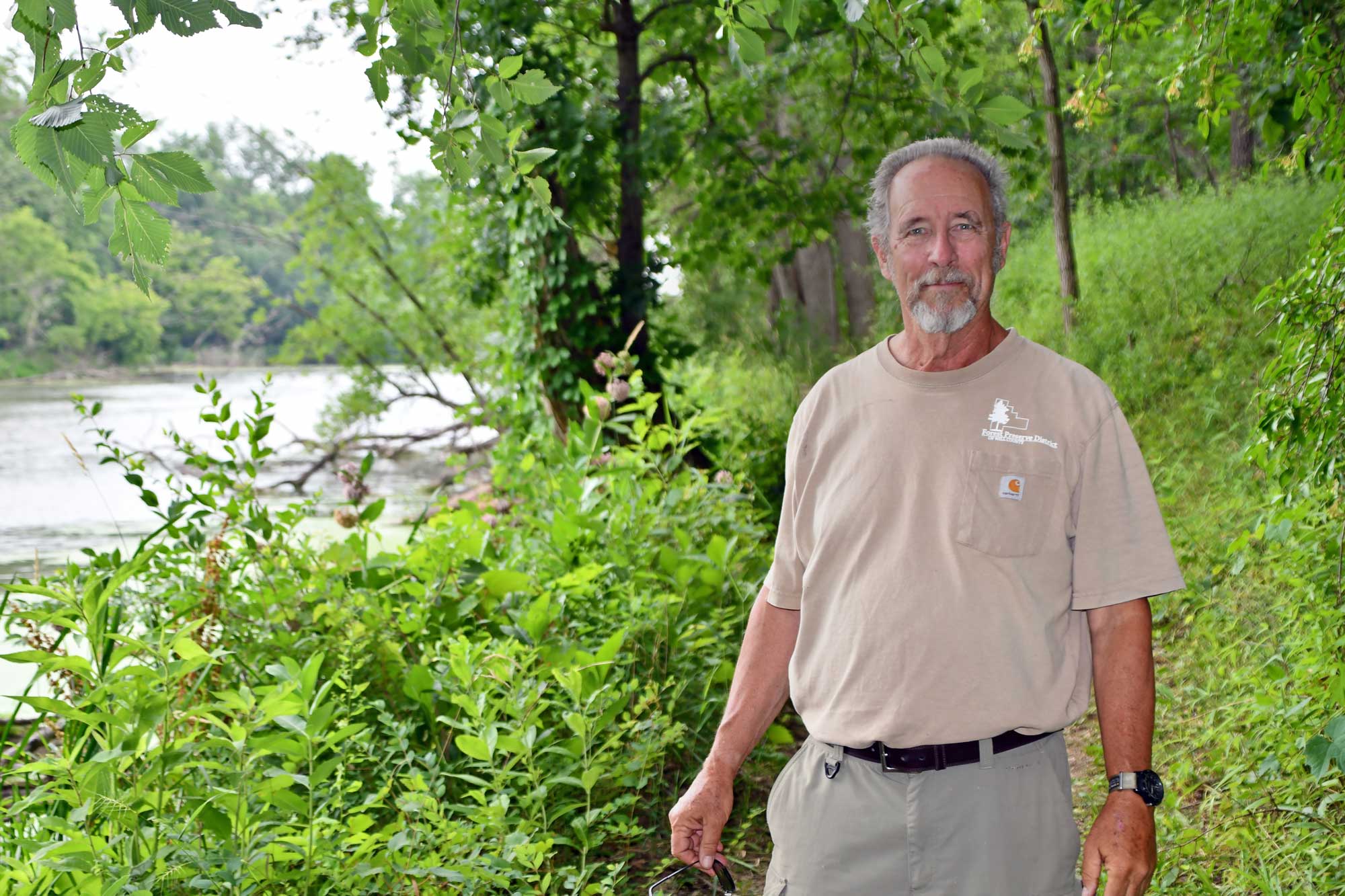Preserves We Love: McKinley Woods, for its restoration successes

About this series: The Will County forest preserves mean many things to many people, including Forest Preserve District staff. Some of us enjoy the peace and tranquility of a particular preserve, while others among us enjoy the bustling feel of some of our more well-traveled trails. For some, the work we've done in the preserves is meaningful and fulfilling. "Preserves We Love" allows Forest Preserve staff to expound on their favorite preserve and why it's special to them. In this edition, land management program coordinator Floyd Catchpole tells us why he loves McKinley Woods — Frederick's Grove.
It’s hard to pick a favorite preserve, but McKinley Woods — Frederick’s Grove is certainly one. About 19,000 years ago, a person on the bluffs at McKinley Woods would have looked out over glacial Lake Wauponsee, with a white wall of glacier off to the east. The lake disappeared in the Kankakee Torrent, and over time sunny woodland and savanna covered the area.
A little more than a century after the bison and elk disappeared from local lands, in 1931, the Forest Preserve bought land there. Located at the headwaters of the Illinois River, with steep, south- and east-facing slopes, McKinley Woods has a southern feel to it, supporting redbud, buckeye and blue ash trees.
McKinley Woods has been an emotional roller coaster ride for me. In 2007, we got a grant from The Conservation Foundation to create prairie and restore woodlands. After drain tile surveys and tile removal, we finally began thinning trees in early 2010, with the goal of turning the darkening forest into a sunny woodland and restoring prairie in old pastures.
But trouble was lurking in the woods. Between 2008 and 2010, McKinley Woods averaged more than 170 deer per square mile, with devastating effects. After thinning trees to get light to the ground so wildflowers could thrive, I saw starving deer wandering the preserve in spring, and not a speck of green. I remember thinking, “How can I restore the plants if I can’t grow a seedling?” and feeling a sense of horror with every rainfall that washed bare soil into the ravines.
The next winter our deer management program started, and I haven’t seen a starving deer since. The surviving wildflowers produced thousands of seedlings that grew to maturity. I watched with delight as asters and woodland goldenrods spread into sunny areas created by thinning. Each year I see more wildflowers, including many uncommon delights like columbine and green violets.
Not that all our problems are over. The flat upland woods around the upper parking lot flood every spring and go bone dry every summer. This is the hallmark of an uncommon natural association called a flatwood. This is the largest protected flatwood in Will County, but white poplar and black locust had run rampant there. After more than a decade of restoration, the flatwood is beginning to recover into a sunny landscape with scattered swamp white oaks and American elms. Much more work needs to be done, but today, McKinley Woods dazzles visitors with one of the best wildflower displays in Will County.
